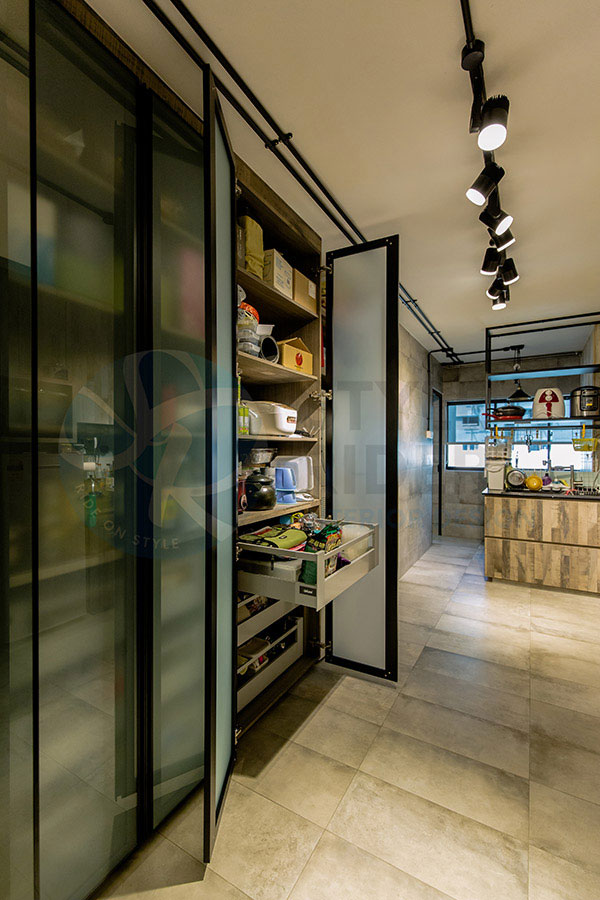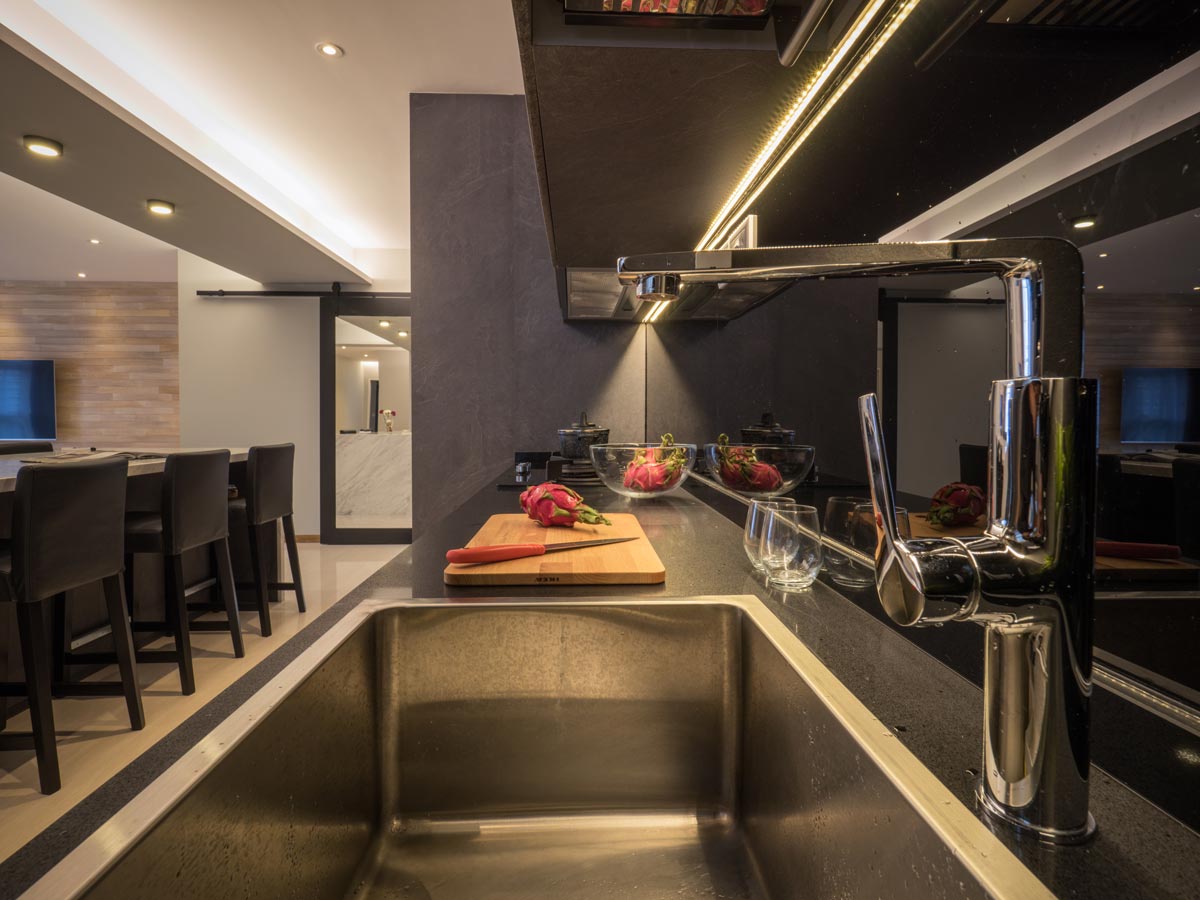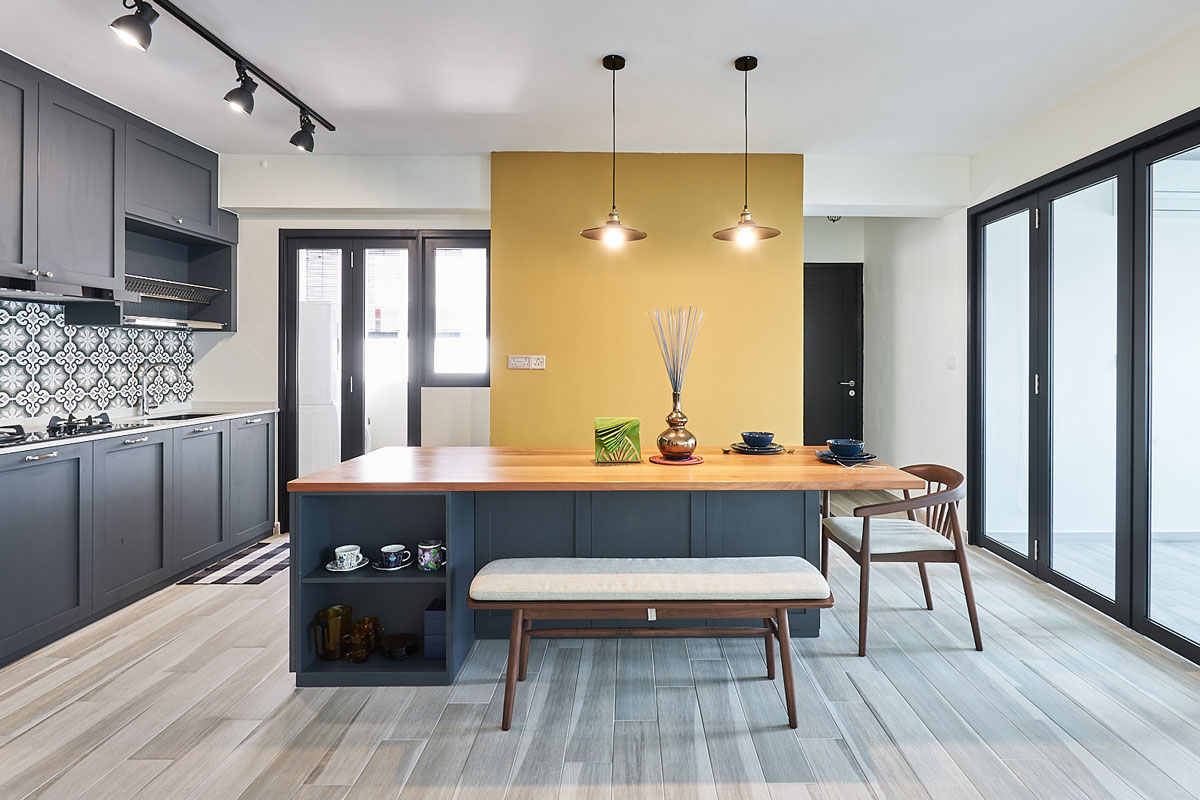What you need to know about kitchen lighting


When it comes to planning your kitchen lighting, most of us tend to leave it to the professionals. But it pays to learn the basics, since it allows you to better communicate your requirements to your interior designer.
Lighting is a key aspect of an efficient kitchen and it also plays a big part in how your overall space looks, so you will want to get things right. To make planning easier, we break down the basics of everything you need to know about kitchen lighting in this guide.
AMBIENT, TASK AND ACCENT
Kitchen lighting, as with most spaces, can be categorised into three different sorts: ambient, task and accent. A properly lit kitchen will have a combination of these.
Ambient lighting, or general lighting, is the main source of light in your kitchen, asides from natural light. It's the first light you switch on when you step inside your cooking space.
Task lighting, on the other hand, helps to eliminate the shadows caused by ambient lighting. It is a focused light, dedicated to lighting key working zones in the kitchen such as the hob, sink or food prep area.
Accent lighting is the fun one in the group. It's design-centric, seeking to enliven the atmosphere or accentuate certain areas in the kitchen for visual interest.
Start by planning your ambient lighting first, before moving to task lighting to see the key areas that need extra illuminating. Then finish off with accent lights that will take your cooking space to the next level.
WHAT LIGHTING TO GO FOR AMBIENT?
You want your chosen ambient light to illuminate your kitchen evenly with as much coverage as possible. In smaller kitchens, a single flush mount ceiling light is usually sufficient. Not only is it budget friendly, the many options out there today also mean you can add a bit of design element to the kitchen with your choice.

Track lights are also popular in Singapore kitchens, although they are often used as task lighting as well since they offer a more focused illumination.
The great thing about track lights is that they are really flexible, with the option to adjust them to better illuminate your space. To make them work as ambient lighting, you will want to opt for ones with a wider beam angle (e.g. 60 deg) to distribute light better around the kitchen.

Don't want to see trunking running around your kitchen ceiling? Get recessed lights, which make an excellent ambient lighting option. Align them in a grid, and locate them close to the sides of your top cabinets to avoid casting too much shadow over your countertop.
A small to medium-sized kitchen will need about 3 to 6 bulbs. They will have to be paired with a false ceiling, which adds to your renovation budget, but they are a lot less visually obtrusive, giving you a more seamless, modern finish to your kitchen.

Tip: We recommend adding a dimmer control to your ambient lighting if your budget allows. It gives you more control over your lighting needs, which can differ depending on the scenario or the person using the kitchen space e.g. the elderly may require a brighter light setting.
TASK LIGHTING: THINK ABOUT THE TASKS INVOLVED
When planning your task lighting in the kitchen, pay attention to areas where you perform tasks like food prepping, cooking and washing up.
Because ambient lights are usually located on the ceiling, they can leave shadows in these key areas especially when you are standing over them. Task lights are therefore included to rid of these shadows and to provide proper illumination in these key zones.
Under-cabinet lights are one of the more common task lights used. They help to illuminate your countertop, which can be obscured because of the top cabinets. Consider using LED strips or puck lights to illuminate the worktop.
The former lends a more evenly distributed light for the entire surface of your countertop, while the latter serves to better highlight dedicated zones.

For easy installation and a DIY option, opt for battery-operated ones. There are also fancy recessed fixtures that can be hidden on the underside of your cabinet so you can't see them. These usually need to be connected directly to your power source by a certified electrician.
To help reduce glare against a glossy or glass backsplash, place your light fixtures closer to the front edge of the underside of your cabinet. Plus, placing it nearer to the front helps to better illuminate the front-end of your worktop.
If you are going with under-cabinet lighting, you might also want to avoid a countertop that features too much sheen in order to reduce glare.

Illuminating the insides of your cabinets and drawers with LED strips or puck lights is also an option if you don't want to have to rummage around for things in the dark. Get fixtures with motion sensors so they can light up automatically when you open your cupboards.
KITCHEN ISLAND: WHAT LIGHT TO USE?
Track lights are also great as task lighting in the kitchen, especially over kitchen islands or peninsulas where there are no top cabinets to locate under-cabinet lights. A long, linear light over your kitchen island also serves to provide an evenly distributed illumination for working on the counter.
If your kitchen island is more a gathering spot or an eating space, rather than a food prep zone, you might want to go with pendants instead which function more like a general, ambient light rather than a focused, task light.
As a general rule, there should be about an 80cm space between the bottom of your pendant light and your island countertop. You will also want to make sure it doesn't reflect any glare into your eyes while you sit by the island.

ACCENT LIGHTS: THE FINAL FLOURISH
Now that your kitchen is properly illuminated, consider adding accent lights to further boost the milieu of your cooking space. There are no precise rules to this one, so it really is all about what looks good.
If you have open shelves in lieu of top cabinets, wall sconces or wall-mounted, swinging arm lamps would serve as a great design element. A quirky, lone pendant by the side can also work to jazz up your space.

Installing toe-kick lights with LED strips can help to illuminate the pathway in a galley kitchen while serving to enliven the ambience. Including lights below your kitchen island can make it appear like it's floating. Another accent light option are cove lights that reflect against the ceiling. The diffused illumination can lend a dramatic air to the space.

For glass kitchen cabinets that you use for displaying your favourite wares, consider installing interior cabinet puck lights to highlight those areas to serve as a point of interest.

HOW BRIGHT TO GO?
When sourcing for bulbs, go with LEDs. Sure, they can be pricier, but they pay off in the long run since they are more energy efficient and can last longer than traditional incandescent or fluorescent bulbs.
To learn more about LED bulbs, read our guide here.
Go with a colour temperature of around 2,700-2,800 Kelvin (K), which gives off a softer, gentler glow and feels more natural in a kitchen setting. Anything above 3,000 K can feel a bit too clinical. Accent lights can have bulbs which give off a warm hue e.g. 2,400 K.
This article was first published in Renonation.